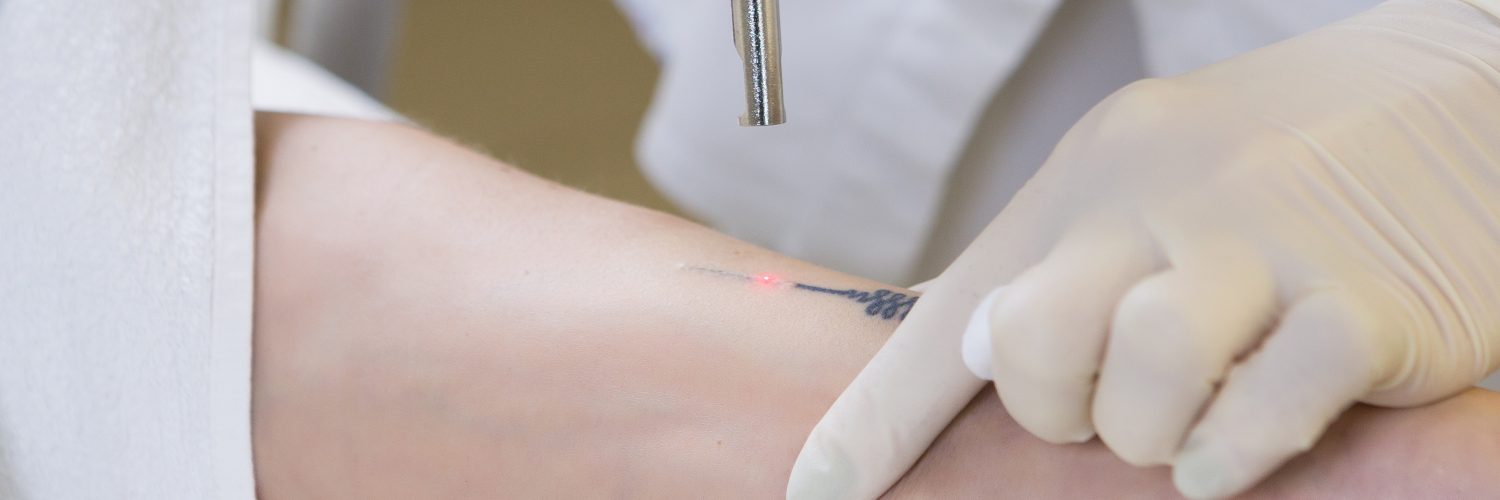Reeh 5780
You shall break apart their altars; you shall smash their pillars; and their sacred trees shall you burn in the fire; their carved images shall you cut down; and you shall obliterate their names from that place. You shall not do this to Hashem your God. (Devarim 12:3-4).
These Pesukim lay out the obligation to obliterate any vestige of Avoda Zara from Eretz Yisrael. They also prohibit the destruction of any items of holiness, such as the stones of the Beis HaMikdash (Rambam, Hilchos Beis haBechira 1:17) or Sifrei Kodesh (Magen Avraham 154:9). In the words of the Sefer Yereim (366): “Our Creator commanded us to not erase, cut up or break any item of holiness”.
In the contemporary era, it is common for people to tattoo their bodies with all manner of designs, figures, and motifs. Tattooing is strictly prohibited by the Torah – marking the body by scratching or burning an area of the skin and filling it with ink is a transgression of “You shall not make a cut in your flesh” (Vayikra 19:28) which is punishable by Malkus (lashes).
There are occasions when people wish to have their tattoos removed – for example, Ba’alei Teshuva often want to be rid of tattoos they acquired during their “previous lives”. Though this is usually a positive step, it raises a complicated Halachic question if the tattoo is one of the names of Hashem – such as the letters Yud, Kei, Vav, Kei (an unfortunately common phenomenon). May one remove a tattoo of this sort or does doing so violate “You shall not do this to Hashem your God”?
In order to reach a Halachic ruling, we will begin by reviewing the three most common methods of tattoo removal:
- Surgical Excision – The tattoo is removed surgically and the skin is stitched back together. This method will leave a surgical scar and is usually recommended only for smaller tattoos.
- Dermabrasion or Chemical Abrasion – Use of a surgical-grinding tool or trichloroacetic acid (TCA) to remove the layers of skin containing the ink particles.
- Laser removal – The tattoo is targeted with highly concentrated light waves that heat up the ink particles and cause them to fragment into smaller particles that are able to be cleared away by the body’s immune system. This method is the least invasive and is the most common method of tattoo removal today.
The Shulchan Aruch (Y.D. 276:9) rules:
It is forbidden to erase even one letter from any one of the seven names [of Hashem] that may not be erased (“Shemos she’Einam Nimchakim”). One may also not erase a letter that is appended to them such as the Chaf at the end of “Elokecha” or the Chaf and Mem at the end of “Elokeichem”.
Is erasing via any method forbidden? The Gemara in Shabbos 120b elaborates:
It was taught in a Beraisa: If somebody had a name [of Hashem] written on his skin – he may neither bathe nor smear himself [with oil], nor may he stand in an area of filth. If he has [to perform a] “Tevilas Mitzva” (an obligatory immersion), he must tie a reed [over the area] and may immerse himself. R’ Yosi says: He may immerse in the regular way [he needn’t tie a reed over the area] as long as he doesn’t rub [the area]…
The Gemara proposes that the dispute between the Chachamim and R’ Yosi is whether it is forbidden to erase the name of Hashem indirectly. According to the Chachamim, if a person has the name of Hashem written on his skin and needs to immerse himself, he must tie a reed over the area to avoid erasing it. According to R’ Yosi since it will only be erased indirectly (via a Grama), there is no need to cover it, as the Posuk in our Parsha states “You shall not do this to Hashem your God”, implying that only a direct act is forbidden, but a Grama is permitted.
However, the Gemara questions this explanation of the dispute. If the Chachamim require the reed to be tied tightly in order to prevent the name from being erased, it will surely be a Chatzitza (an interposition) and invalidate the Tevila. And if it isn’t tied tightly, it will surely not prevent the erasure of the name at all!
The Gemara therefore concludes that, in fact, all parties agree that there is no issue of erasing Hashem’s name through a Grama. Rather, the Chachamim’s concern is that a person may not stand unclothed in front of Hashem’s name, and they therefore required him to cover it with a reed before undressing for Tevila.[1]
Based on the Gemara’s conclusion, the Rambam (Hilchos Yesodei haTorah 6:6) rules:
[In the case of] a vessel upon which [Hashem’s] name is inscribed – one must cut out the area of the name and place it in Geniza. If the name was carved into a metal or glass vessel and he melted it down – the punishment is Malkus. Instead, he must cut out the area of the name and place it in Geniza. Similarly, if the name is written on a person’s flesh – he may neither bathe nor smear himself [with oil], nor may he stand in an area of filth . If he has a Tevilas Mitzva, he must tie a reed [over the area] and may immerse himself. If he cannot find a reed, he shall cover the area with an item of clothing, but he shall not tie it tightly so that it shouldn’t be a Chatzitza. [This is because] the only reason [Chaza”l] said to wrap [the area] was because it is forbidden to stand unclothed in front of Hashem’s name.In short, erasing Hashem’s name through a Grama is permitted. This is the conclusion of many of the Poskim (see footnote[2]). However, several Acharonim[3] contend that this appears to be contradicted by a famous Gemara in Sukkah (53a-b):
When Dovid haMelech was excavating the Shitin[4], the waters of the deep rose up and threatened to inundate the world. Dovid said, “Is there anybody who knows whether it is permitted to write [Hashem’s] name on a shard of clay and to throw it into the depths so that they will subside?” [In other words, is it permitted to cause the erasure of Hashem’s name in this manner?] Nobody could give Dovid an answer. Dovid said: “Anybody who knows the answer but does not divulge it shall be strangled”.
Achitofel thought of the following Kal vaChomer. In order to make peace between a man and his wife, the Torah said, “My name that is written in holiness shall be erased in water”.[5] Certainly, to bring peace to the entire world [i.e. by saving it from inundation by the water] it would also be permitted. He therefore said to Dovid, “It is permitted”.
This Gemara strongly implies that erasing Hashem’s name through a Grama is forbidden unless it is for the purpose of “bringing peace to the entire world”. This would seem to contradict the conclusion of the Gemara in Shabbos.
In his Sefer Maor Yisrael (Shabbos ibid.), R’ Ovadia Yosef zt”l cites a number of distinctions. Firstly, Dovid haMelech’s deliberately intended to cast the Shem Hashem written on the shard into the water, whereas the person going to the Mikvah discussed in the Gemara in Shabbos had no direct interest or intention in submerging the Shem Hashem underwater and it is entirely incidental to the Tevila. Secondly, even if the act of casting Hashem’s name into water is only considered to be a Grama, that does not necessarily permit a person to write the name specifically with the intention of doing so.
At any rate, the Acharonim agree that one cannot forbid the erasure of Hashem’s name through a Grama on the basis of the Gemara in Sukkah. See also the Avnei Nezer Y.D. 1:370. Therefore, many argue that laser removal a tattoo of Hashem’s name is permitted as the erasure is done indirectly, as described above.
However, there are additional considerations, including the opinion of the Noda biYehuda (Tinyana, O.C. 17) that those who allow erasing Hashem’s name via Grama only permit it for the purpose of a Mitzva. Even an indirect act of erasure, though it may not violate “You shall not do this to Hashem your God”, disgraces Hashem’s name. Therefore, it is only permitted for the purposes of a Mitzva when it will not constitute an act of disgracing Hashem. Many Acharonim agree with the Noda biYehuda, and, according to R’ Ovadia Yosef zt”l (Sefer Maor Yisrael, ibid.), the idea can already be found in the writings of the Rishonim.
Nevertheless, a person may remove a tattoo of Hashem’s name via Grama as his reasons for doing so are to prevent a disgrace to Hashem’s name. Tattoos are sometimes found on areas of the body that are inherently disgraceful, and, regardless of the anatomical location, it would often be exposed in filthy or inappropriate environments. Since it would be practically difficult to prevent this from taking place, the tattoo’s removal constitutes a Mitzva and is permitted. This was the conclusion of haGaon Rav Asher Weiss Shlit”a. However, R’ Ovadia Yosef zt”l recommended that the procedure be performed by a non-Jew.
[1] R’ Yosi agrees that one may not stand in front of the name of Hashem when unclothed. See the Gemara (120b-121a) there for the ultimate explanation of the Machlokes.
[2] See the Tashbeitz 1:2, Chasam Sofer O.C. 32, Beis Efraim E.H. 1, Takanas Agunos 9a, Shu”t Maharsham 5:61 et. al. See also Shu”t Meshiv Mishpat (by R’ Ovadia Yosef Toledano) 1:19.
[3] See the Tuv Ta’am voDa’as 239 and Shu”t Maharsham ibid.
[4] Dovid prepared the foundations of the Beis HaMikdash which was ultimately built by his son Shlomo. This included digging channels beneath the Mizbe’ach through which the wine and water of the libations would pass. These were known as “Shitin”.
[5] During the Sotah, procedure a piece of parchment with Parshas Sotah – including Hashem’s name – was erased in water that the woman accused of infidelity would drink. This would determine whether she had actually committed adultery or not, and thus would bring peace between her and her husband if she were innocent.












Add comment